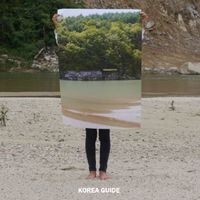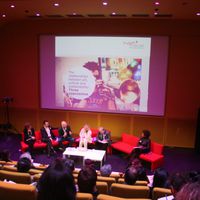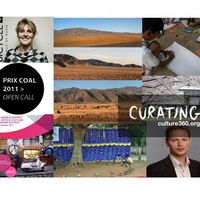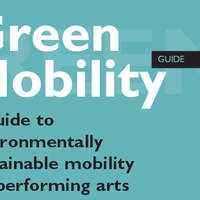Green + Arts + Culture + Mobility: Towards an international equation?
 Contributed by Marie Le Sourd
Contributed by Marie Le SourdIn one year, the 21st UN International Conference on Climate Change will take place in Paris from 30 November to 10 December 2015. Despite some strong and evidence-based call for action (see the recent IPCC statement) and recent encouraging political advancements (like the recent USA-China Joint Announcement on Climate Change), one can be pessimistic about the concrete political decisions and related actions which will arise from this international conference.
However, this Conference is considered as a great opportunity for the Paris-based organisation COAL (Coalition for Arts and Environment) and UK-based Cape Farewell to give more visibility to the actions of the arts and culture sector around key global environmental issues. Both organisations are therefore jointly coordinating with local European and international partners, the ARTCOP21 taking place alongside the International Conference on Climate Change. This programme – artistic, collaborative and innovative - will include 5 key moments: a special edition of the COAL Art Prize; a conference of creative parties; a series of massive and participatory installations; an artistic path throughout Paris and its suburbs to raise awareness among the public about environmental challenges; and a professional workshop with policy makers, funders and representatives from the cultural and creative sectors. The idea behind the ARTCOP21 is to highlight the role of the arts and cultural sector in raising awareness on environmental issues, while promoting innovative solutions by civil society organisations in order to embrace the challenges at stake.
Lauranne Germond, Director/Co-founder of COAL says: “The ARTCOP21 will mostly take place in Paris and its suburbs (region Ile de France). The idea is however to position this programme at a European and international level and hence to include artists, creators, change makers from Europe and the rest of the world to reinforce one key message: the need to voice out a multiplicity of approaches and innovative solutions coming from the arts and cultural sector to answer the complex environmental issues we all face today at various levels”.
This international approach is needed to avoid transforming the subject of art and environment into a “luxurious western form of concern”, to quote the Budapest-based producer Anna Lengyel during the session “Green international cultural exchange, International Mobility versus Virtual Cooperation?” at the IETM Asia Satellite Meeting in Melbourne on 13 May 2014. According to the organisers, IETM and the Australia Council for the Arts, the title of the working session was intentionally controversial in putting into perspective the terms of “virtual” and “green”.
[caption id="attachment_46153" align="aligncenter" width="582"]
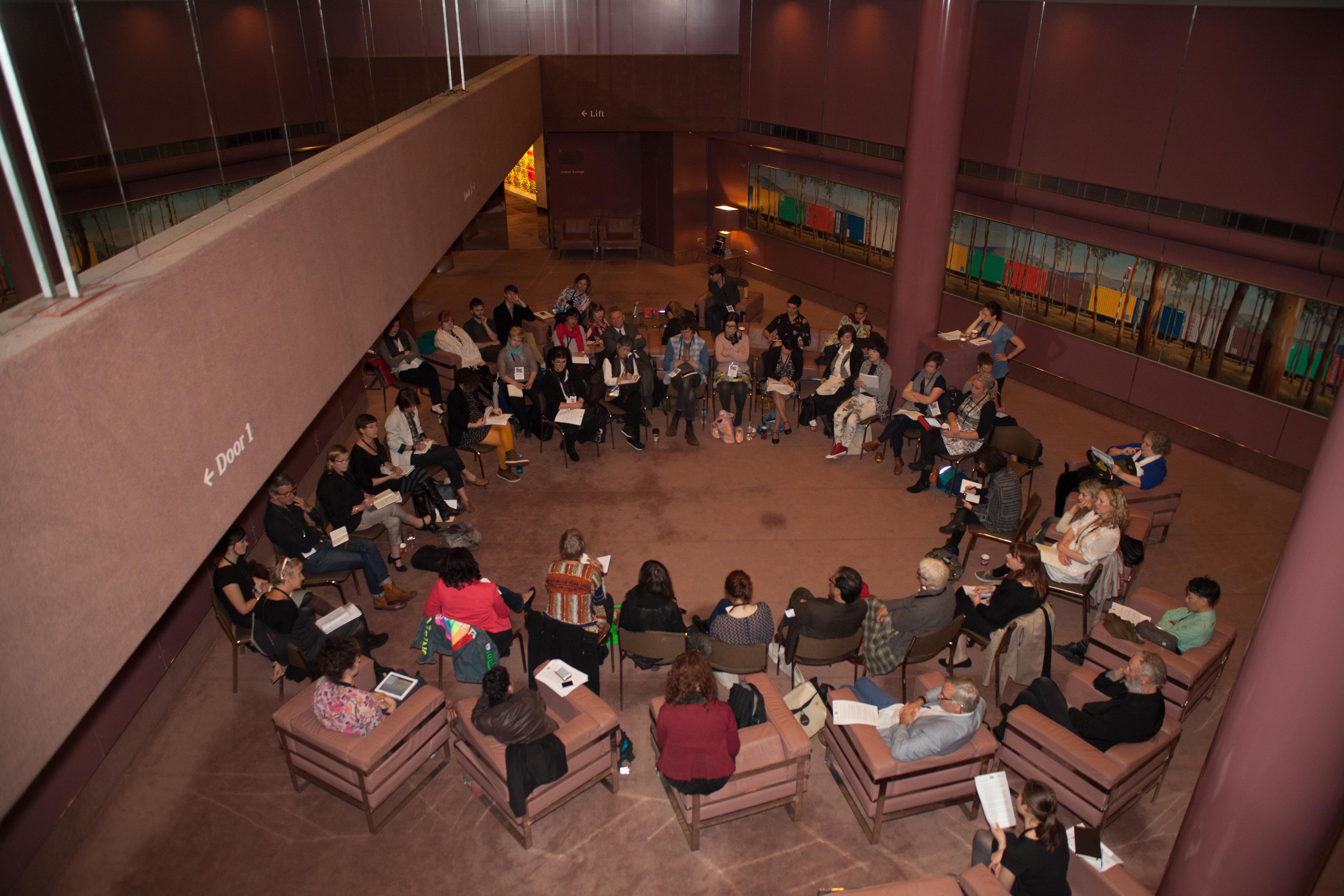 IETM green day[/caption]
IETM green day[/caption]This session gathered panellists from Australia, Indonesia, United Kingdom and Belgium. Good examples of artists’ projects were presented: the Going Nowhere project on how artists, creators and audiences engage with international creative exchanges between UK and Australia without moving on a plane or on board of any other transportation means, and the green initiatives by ArtsAdmin in the United Kingdom.
Some of the speakers like Kristi Monfries, curator and art manager (Australia/Indonesia) also highlighted issues such as heavy pollution, garbage management by public authorities, plastic overuse, saying that these “are at our door step and remind us at every moment of the environmental challenges that today’s world is facing”.
The question of a more “controlled” mobility or at least a more rationalised one seemed more easily considered by artists and cultural professionals who have the choice to think that way and have the financial means to do so. From a South-East Asian point of view (except for Singapore) opportunities to travel are still limited for the majority of cultural professionals due to a general lack of funding support for cultural mobility. Being “green” is a de facto situation much more than a real choice. The green aspect of artistic practices was also highlighted through some examples of artists in residence programmes. Mella Jaarma, co-director of Cemeti Art House in Yogyakarta, Indonesia talked about artists working directly with local people and/or craftsmen in order to use local materials and knowledge in their artwork and/or process. The intention for artists coming to Yogyakarta is to make the mobility experience and its impact more relevant than the travel itself and to maximise the potential of their experience also for the local communities.
This idea recalled one of the key points shared during the “Workshop on green issues for the sustainable support of cultural mobility” held in Berlin on 12-13 March 2014, as part of the EU-funded project GALA (Green Art Lab Alliance) coordinated by Julie’s Bicycle and DutchCulture/ TransArtists*. As highlighted by Sholeh Johnston from Julie’s Bicycle, mobility experiences have to happen beyond the travel itself. Therefore there is a constant need to dialogue about the format of the mobility (touring, co-production, residencies etc.) and the whole process of production, in order to maximise the impact of the travel for the artists, the organisations and the audiences involved.
This workshop attempted to better link initiatives from the sector and policy orientations to embed green criteria in the way funding is allocated to cultural projects (including those with a cultural mobility component). In this regard, two recent reports have highlighted the possible connections between the cultural sector and innovative green solutions and the actions by governmental agencies and Ministries:
- The D’Art report, The Art and environmental sustainability, An international overview by IFACCA (International Federation of Arts Councils and Cultural Agencies) and Julie’s Bicycle provides a snapshot of national policymakers’ level of engagement with environmental sustainability with an emphasis on policies, not on artistic content or wider arts practice;
- The report Culture shift: How artists are responding to sustainability in Wales commissioned to the Arts Council of Wales aims in a somewhat complementary way to the above report at identifying initiatives, networks, artists of what is becoming an “emerging sector”.
These documents are conceived in a pro-active way and seek to share good practices as well as to encourage collaborations and partnerships at all levels (local, national and international) to tackle these global environmental challenges. Ian Rimmington of Arts Council of England said during the above mentioned training in Berlin: “Think long-term: as long as people are getting in the right direction, this is fine!” And this “right” long-term direction shall definitely encompass a more international, holistic and cooperative approach while taking benefit of the experiences and initiatives of the cultural and creative sector worldwide. A topic that will be definitely tackled in the up-coming ARTCOP21! Stay tuned!
*ASEF culture360 is one of the media partners of the EU funded project GALA. The final meeting of GALA will take place in Glasgow in March 2015, hosted by Creative Carbon Scotland. See more at: https://culture360.asef.org/asef-news/asef-culture360-media-partner-of-the-green-art-lab-alliance/
Similar content
posted on
12 Nov 2015
posted on
28 Aug 2015
posted on
20 Jun 2011
posted on
14 Mar 2013


